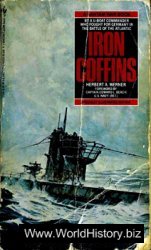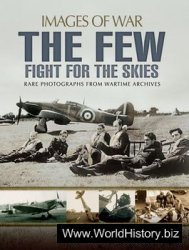Throughout the Pharaonic era, and already in the Neolithic, two dimensional representation employed iconic scenes as a means of communication (Barta 1970; Harpur 1987; Van Walsem 2005). Such subjects as Nilotic flora and fauna and male hunting parties were well attested on early Naqada vessels. Well-known Egyptian artistic norms, such as the symmetrical balancing of scenes, were also employed on these pots (Schafer 1986). Likewise, the shapes of decorated surfaces influenced the artworks themselves, so that a circular plate was treated as a round pool in which hippopotami or fish swam round and round, while a round or cylindrical pot might be treated either as two-sided and carry dual scenes that communicated visually or as a continuous canvas on which rows of animals moved around the vessel’s circumference. Scenes on tall or globular pots frequently were bounded top and bottom by elements that created a landscape of desert, mountain, or river valley. Further, despite the use of icons to convey content - as, for example, on the well-attested Naqada Ilc/d boat vases - as in later Egyptian art, each icon was adapted to the specific object, both as to size and proportion, but also as to specific imagery. The art was, therefore, hieroglyphic in nature, relying on requisite forms combined with one or more elements that might convey further meaning. Painted art continued to combine hieroglyphically formulated images into characteristic scenes that were adapted to the overall context, including architecture and objects (Fitzenreiter 2001). Over time the ideation of the elements used increased in value. For example, in the earlier Neolithic, men might carry bows that designated them as hunters, but already by Naqada IIc, in the Hierakonpolis Tomb 100 painting, the presence of an animal-herding crook in the hand of a dominant male identifies not an occupation but political power - and probably rulership. Egyptologists do not always agree that ideological and religious intent was layered into metaphors such as the crook of rulership, and particularly there is disagreement about any mythological interpretations to tomb scenes of the Old Kingdom (Van Walsem 2005; Altenmuller 1998). For later periods, however, most scholars agree that the icons used were intended to be understood on a series of levels, depending on the education and interest of the viewer.
The Hierakonpolis Tomb 100 contained an early example of mural painting - perhaps the most intensively developed use of this artistic medium (Cialowicz 1998) (plate 9). Despite the absence of canonical conventions, such as registers and regulated proportioning, the wall presents the basic elements of Pharaonic Egyptian painting, and of two-dimensional art generally. Some painting conventions known from later wall decoration were utilized by the artist(s) of the mural, including the variation of dark red and lighter ochre body colors to emphasize individual figures. The polychrome palette indicates the direction in which painting was developing; yellow, red, brown, white, and black were all present, leaving only green and blue to be added. The background is colored in the buff tone of the wall mortar and appears similar to that of the contemporary Naqada Ilc/d pots (Vandier 1969). Likewise the dominance of the boat icons is similar to that of the boat scenes on pottery. Yet one boat is larger and placed higher than the others, and riding in its kiosk is perhaps the ruler associated with Tomb 100 itself. In addition to the continuous central boat motif, the painting contains several other thematic groupings separately placed. In the upper left a man with uplifted mace faces wild animals, perhaps lions, demonstrating an individual’s physical power. In the lowest level of the painting a single thematic area runs across the wall. At left a figure, similar to that at upper left, raises his mace before three crouching captives (figure 43.1) Two figures with large scepters, one the crook and the other the was may both indicate the same hero as ruler, while to the right of center two icons represent a hand-to-hand fight in progress and with the victor raising his weapon over the defeated combatant. Three crouching figures may be captives and visually link to the left end of this thematic group. The physically dominant male as victor over other men - and therefore a political ruler - is a clear message from this sequence of icons, and just above them two additional groups add additional information. A hero is flanked by two confronting lions in a manner well known from the Gebel el-Arak knife and generally considered to be inspired by Mesopotamian sources (Pittman 1996). To the right a man fights a bull, which is shown defeated by its upside down placement. Both scenes have mythic

Figure 43.1 Hierakonpolis Tomb 100. Detail of victorious hero.
Elements, since the animals in question are themselves associated with raw power and, in the historical era, with divine kingship. Here their placement near the smiting scene may add hegemonic ideology to the heroic roles of the man represented. Another type of iconic group appears on the upper right where the hero hunts antelope with dogs, a motif that balances against the upper-left lion hunt. Both scenes also localize the setting in a desert, uphill from the Nilotic boats. The landscape is further suggested by the cavorting hill-animals placed centrally, and rather oddly, as if in the midst of the river. A final grouping in the center of the painting may also have been an attempt at landscape suggestion, since we see five antelopes placed with their feet on a small circle within a larger one, creating a ring of animals. This motif may communicate in plan view the numerous hillocks and gebels along the river where smaller desert animals might be spied. Although perhaps not so successful as a means of indicating an upland area, this motif surely marks the ingenuity and creativity of a very ancient artist. As an early wall painting, Tomb 100 at Hierakonpolis functioned in many ways like later Pharaonic tomb paintings that memorialized the life of the deceased. The tomb owner was depicted in many roles and linked to the broader community in which he lived by the presence of the fleet of boats (Cialowicz 1998).




 World History
World History









